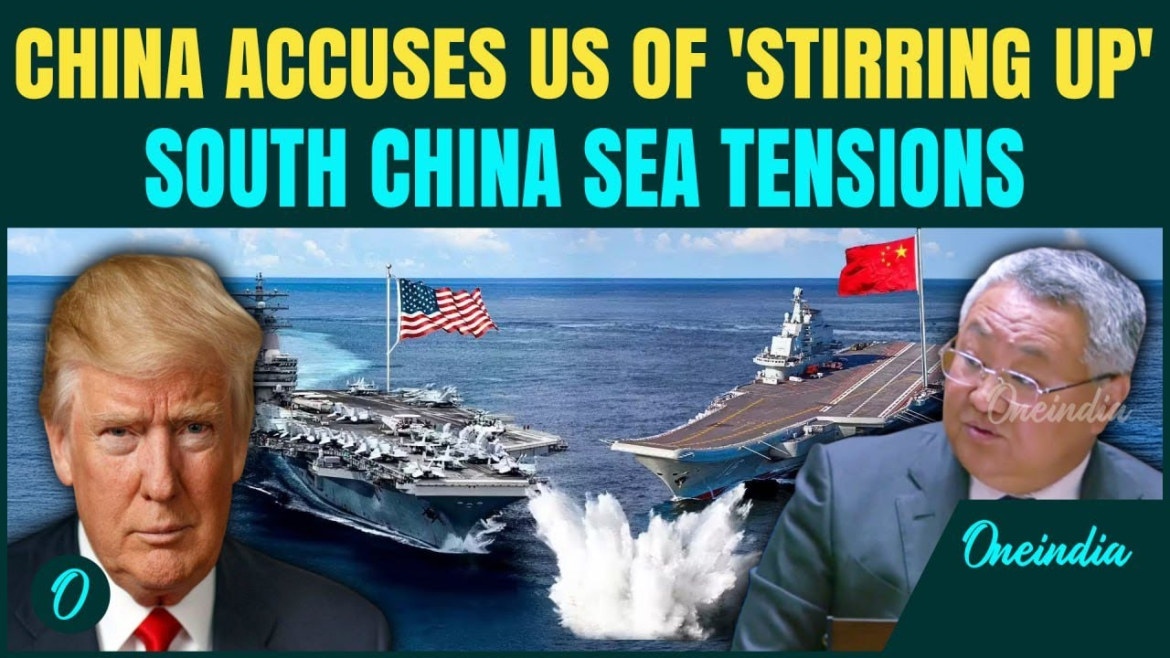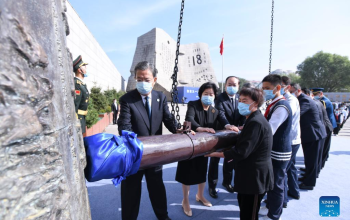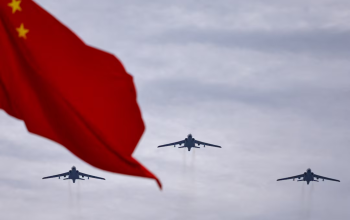When the Philippines President Ferdinand Marcos Jr. stood side by side with the U.S. President Donald Trump in the White House on July 22, the symbolic weight of the moment was lost on none. During what Trump described as a “beautiful visit,” the United States and the Philippines struck a lopsided trade deal, allowing U.S. goods to enter the Philippine market tariff-free, while goods from the Philippines would face a 19 percent tariff upon entering the U.S. market.
For Marcos, however, the true reward of the trip wasn’t the high-profile trade deal sealed in the Rose Garden, but something far more consequential to Manila’s long-term strategy: a personal promise from Trump to deepen Philippine-U.S. military cooperation. Marcos’ visit was a success – not just diplomatically, but strategically – in pulling Trump’s attention back to the simmering tensions in waters far from Washington, but close to home for the Philippines.
In the months leading up to Marcos’ visit to Washington, the South China Sea had all but disappeared from the radar of U.S. strategic attention. The Trump administration, entangled in a sweeping global trade war and laser-focused on negotiating a high-stakes peace deal between Russia and Ukraine, seemed content to let the simmering tensions between China and the Philippines drift into the background. However, since Marcos’ stop in Washington, the White House has begun to take a noticeably sharper — and more confrontational — stance on the South China Sea dispute, suggesting that the Philippine president may have succeeded in nudging the issue back onto Trump’s crowded foreign policy agenda.
Expanding Philippines-U.S. Defense Cooperation
Following Marcos’ visit to the United States, the Philippine-U.S.. defense cooperation is unfolding with remarkable momentum. A swift and decisive succession of high-level engagements and joint initiatives between the two countries’ defense departments is a reflection of the hardening of the alignment between the two allies
On August 7, Armed Forces of the Philippines (AFP) Chief of Staff General Romeo Brawner met with U.S. Indo-Pacific Commander Admiral Samuel Paparo, and signed a rare “8-star memorandum” — a symbolic and substantive milestone in Philippines-U.S. military-to-military coordination. This was followed by another key meeting on August 15, when Philippine Army Commander Lt. Gen. Antonio Nafarrete held talks with senior officials from the Joint U.S. Military Assistance Group, aiming to enhance interoperability between both armies.
On August 14, the Philippines’ ambassador in Washington revealed that discussions over potential deployment of more missile launchers to the Philippines is underway. The U.S. Navy is also planning to build a fast boat facility that will be able to launch at least five boats, which was announced days prior to Marcos’ visit to the United States.
On August 18, U.S. defense giant Lockheed Martin announced a new collaboration with Southern Methodist University, in partnership with the Philippine academic and industrial institutions, to establish a local R&D hub in Manila to drive joint research, accelerate technological development, and cultivate domestic defense talent.
Together, these developments point to a shift of focus in the Philippine-U.S. strategic partnership – evolving from joint exercises and symbolic gestures into a more systemically integrated framework for sustained deterrence, enhanced interoperability, and local defense development. As tensions over flashpoints like Scarborough Shoal intensify, this deepening alignment would enable both Washington and Manila to respond with greater speed, coordination, and strategic focus.
“Peace Through Strength”: Philippine-U.S. Coordination in the South China Sea
In the meantime, a sharp uptick in U.S. military presence is taking place on the frontline of the China-Philippine maritime disputes in the South China Sea.
On August 13, two U.S. Navy destroyers – USS Higgins and USS Cincinnati – were deployed to the contested waters of the Scarborough Shoal. USS Higgins even sailed within 12 nautical miles of the shoal – waters that China has declared as its territorial sea. The Chinese military later announced that it had “driven away” the USS Higgins from the spot, and urged the United States to “effectively restrain its frontline troops.” Since Trump’s inauguration in January, this is the first time that the United States has taken a direct and forward approach in contesting China’s maritime claims in the South China Sea.
On the very same day, a Philippine Coast Guard (PCG) aircraft flew over the same location with foreign journalists onboard, prompting a reaction from the Chinese military, and resulting in a nearly 20-minute dangerous close encounter with a Chinese fighter jet, which reportedly closed to within only 61 meters of the Philippine plane at one point.
These two events came in just two days after the August 11 collision incident, where two Chinese vessels – China Coast Guard (CCG) 3104 and People’s Liberation Army Navy (PLAN) Guilin 164 – collided while chasing two Philippine ships away from the contested waters of Scarborough Shoal.
The almost simultaneous deployment of the U.S. naval and Philippine aerial assets over Scarborough Shoal – happening just two days after the collision between two Chinese vessels in the same location — can hardly be coincidental. It reflects a calculated move by both Washington and Manila to send a coordinated signal to Beijing. By projecting force precisely where tensions had just peaked, Manila and Washington are demonstrating a new level of strategic alignment, one that embodies a more muscular form of signaling. This is in line with Trump’s brand of “Peace Through Strength,” where credibility is measured by assertiveness.
However, with each show of force comes the heightened danger of miscalculation, escalation, and entrapment. While the Trump administration may view ambiguity as weakness and strength as the sole path to peace, such binary logic has left little room for diplomacy or de-escalation. In a region already fraught with overlapping claims and fragile trust, the current recalibration of the United States’ South China Sea policy risks fueling endless cycles of provocation and retaliation, instead of restoring balance. While strength may deter in the short term, it is unlikely to ensure long-term stability in the South China Sea without parallel efforts to manage tensions.




